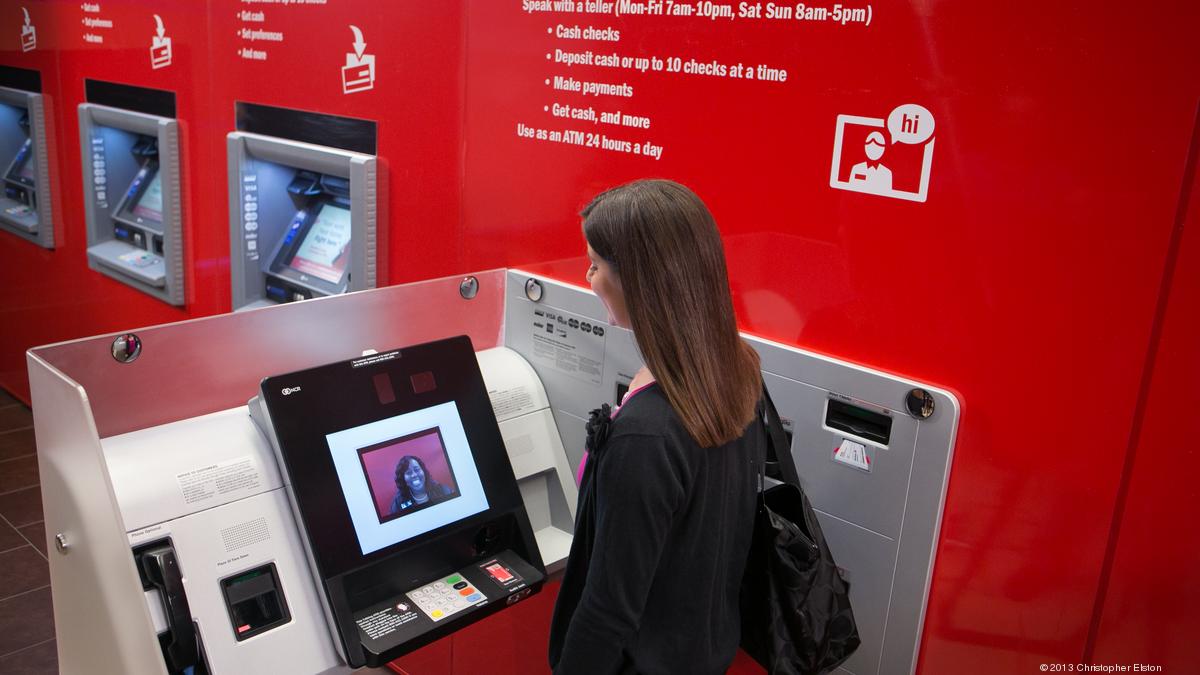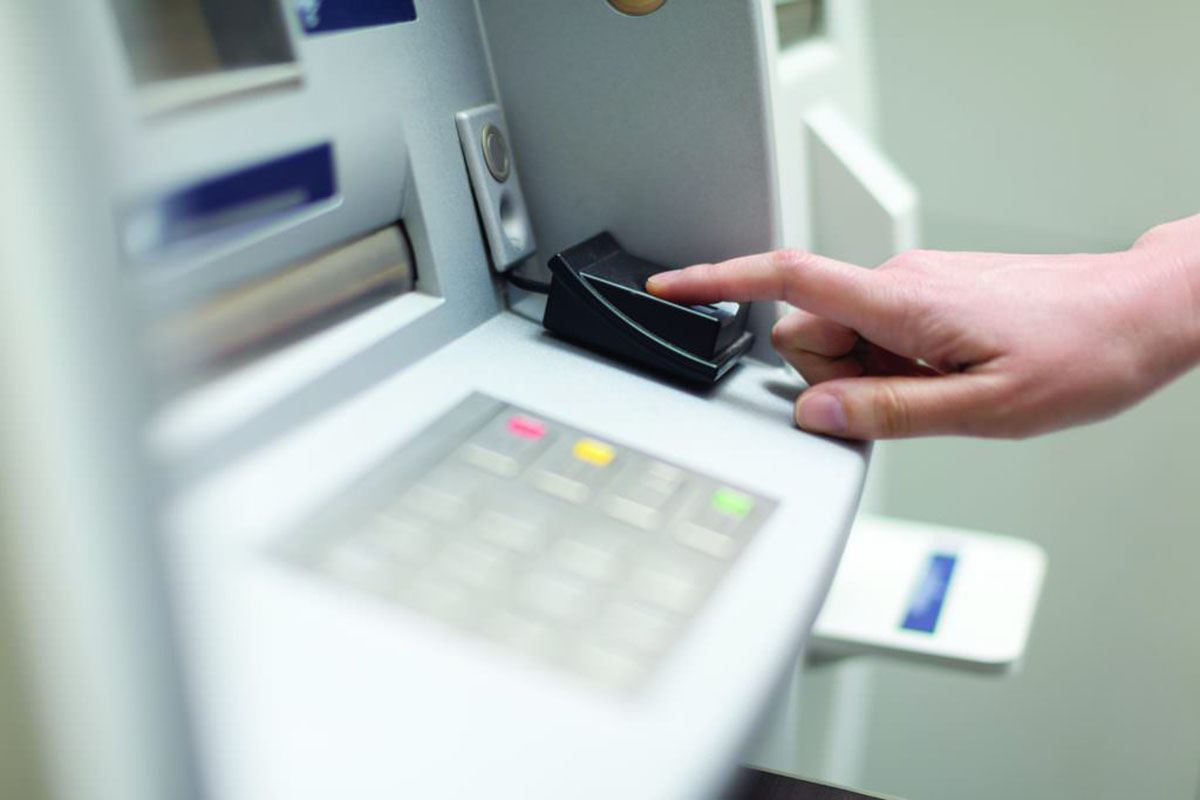

Finance
What Is An EFT In Banking
Modified: February 21, 2024
Learn about the role of Electronic Fund Transfers (EFT) in the world of finance, including its benefits, processes, and importance in modern banking.
(Many of the links in this article redirect to a specific reviewed product. Your purchase of these products through affiliate links helps to generate commission for LiveWell, at no extra cost. Learn more)
Table of Contents
Introduction
Welcome to the world of electronic funds transfer (EFT) in banking. In today’s digital age, where convenience and speed are essential, EFT has revolutionized the way we handle financial transactions. Whether you’re transferring money between accounts, paying bills online, or receiving your salary through direct deposit, EFT has become an integral part of our everyday banking activities.
EFT refers to the electronic transfer of funds from one bank account to another, eliminating the need for physical money or paper checks. With the click of a button, you can securely send or receive money, making transactions seamless and efficient.
As technology continues to advance, EFT has evolved to offer a variety of options that cater to different banking needs. From Automated Clearing House (ACH) transfers to wire transfers and online payment systems, there are various types of EFT methods available in banking.
In this article, we will explore the different types of EFT in banking, the benefits they offer, and how they compare to traditional banking methods. We’ll also delve into the inner workings of EFT, the security measures in place to protect your funds, as well as the challenges and risks associated with this technology. Finally, we’ll discuss the future of EFT in banking and how it is set to shape the financial landscape.
So, if you’ve ever wondered what EFT is and how it has transformed banking, read on to discover the fascinating world of electronic funds transfer.
Definition of EFT
Electronic Funds Transfer (EFT) is a system that allows the electronic transfer of funds from one bank account to another. Instead of using physical cash or paper checks, EFT enables individuals, businesses, and financial institutions to send and receive money securely and efficiently through electronic means.
EFT encompasses a wide range of financial transactions, including online transfers, direct deposits, bill payments, wire transfers, and more. These transactions can be conducted through various channels, such as online banking platforms, mobile banking applications, automated teller machines (ATMs), or even over the phone.
The key elements of EFT systems are the sender, the recipient, and the participating financial institutions. When initiating an EFT transaction, the sender provides instructions to their bank or payment service provider, specifying the amount of money to be transferred and the recipient’s account details. The sender’s bank then securely transfers the funds to the recipient’s bank, which credits the amount to the recipient’s account.
It’s important to note that EFT is not limited to domestic transfers. International EFT, often referred to as wire transfers, allows individuals and businesses to send money across borders, facilitating global commerce and financial transactions. These international transfers may involve additional intermediary banks and may be subject to different fees and regulations.
EFT has become increasingly popular due to its speed, convenience, and cost-effectiveness. It eliminates the need for physical transportation of cash or the issuance and processing of paper checks, resulting in faster and more efficient transactions. Furthermore, EFT minimizes the risk of loss or theft associated with handling physical money and reduces the administrative burden of manual processing.
Overall, electronic funds transfer has revolutionized the way we conduct financial transactions, offering a secure and streamlined method for transferring funds domestically and internationally. As technology continues to advance, EFT is likely to become an even more integral part of our banking experience, providing greater convenience and efficiency.
Types of EFT in Banking
Electronic Funds Transfer (EFT) in banking encompasses various methods that allow individuals and businesses to transfer funds electronically. These methods offer convenience, speed, and security, making transactions seamless and efficient. Let’s explore some of the common types of EFT in banking:
- Automated Clearing House (ACH) Transfers: ACH transfers are widely used for a variety of purposes, including direct deposit of salaries, payment of bills, and transferring funds between bank accounts. ACH transfers involve the electronic movement of funds between banks, facilitated through the ACH network. This network processes batches of transactions, usually taking 1-3 business days to complete.
- Wire Transfers: Wire transfers enable the immediate transfer of funds from one bank account to another, typically for high-value transactions or urgent payments. Wire transfers are often used for international transfers, as they provide a quick and secure method to send money across borders. However, they are typically associated with higher fees compared to other EFT methods.
- Online Payment Systems: Online payment systems, such as PayPal, Venmo, and Paytm, have gained popularity in recent years. These systems allow individuals to make payments, send money to friends or family, and even conduct online business transactions. Online payment systems often link to users’ bank accounts or credit cards, enabling seamless and secure transfers.
- Mobile Banking Applications: With the increasing adoption of smartphones, many banks have developed mobile banking applications that enable customers to perform EFT transactions on the go. These applications allow users to transfer funds, pay bills, and manage their accounts from the comfort of their mobile devices.
- Point of Sale (POS) Payments: POS payments involve using debit or credit cards to make purchases at physical retail locations. These transactions instantly authorize and transfer funds from the buyer’s bank account to the merchant’s account through an EFT process. This type of EFT has become widely prevalent due to its convenience and the increasing use of contactless payment methods.
These are just a few examples of the types of EFT methods available in banking. Each method provides its unique advantages and suits different purposes and preferences. Whether you prefer the ease of ACH transfers, the immediacy of wire transfers, or the convenience of online payment systems, EFT offers a range of options to suit your financial needs.
Benefits of EFT in Banking
Electronic Funds Transfer (EFT) in banking offers numerous benefits for individuals, businesses, and financial institutions. Let’s explore some of the key advantages of utilizing EFT:
- Convenience: EFT provides unparalleled convenience by allowing users to transfer funds electronically from the comfort of their homes or offices. Whether it’s paying bills, making purchases online, or receiving direct deposits, EFT eliminates the need for physical visits to banks or payment centers, saving time and effort.
- Speed: EFT transactions are typically processed almost instantaneously, allowing funds to be transferred quickly. This is particularly beneficial for urgent payments or time-sensitive transactions. Unlike traditional banking methods, such as issuing and processing paper checks, EFT eliminates delays and accelerates the payment process.
- Cost Savings: EFT can result in significant cost savings for both individuals and businesses. With EFT, there is no need for expenses associated with printing paper checks, postage, or fees for money order purchases. Additionally, EFT reduces the risk of manual errors commonly associated with handwritten checks, minimizing the potential for financial losses.
- Reduced Risk: EFT enhances security and reduces the risk of loss or theft associated with handling physical cash or paper checks. EFT transactions are encrypted and often require authentication, ensuring that the funds are transferred securely between accounts. This reduces the risk of fraudulent activities and provides peace of mind for both senders and recipients.
- Transaction History: EFT systems maintain a digital record of all transactions, providing users with detailed transaction histories. This is particularly beneficial for tracking expenses, managing budgets, and reconciling financial statements. Users can easily access and review their EFT transaction history, simplifying financial management and record-keeping.
- Accessibility: EFT can be accessed 24/7, allowing users to initiate transactions at any time, regardless of business hours or geographical location. Additionally, the availability of mobile banking applications makes EFT even more accessible, giving users the flexibility to transact on-the-go using their smartphones or other mobile devices.
The benefits of EFT have transformed the way we handle financial transactions, offering convenience, speed, cost savings, improved security, and accessibility. As technology continues to advance, we can expect further enhancements to EFT systems, providing even greater benefits for individuals and businesses in the future.
EFT vs. Traditional Banking
Electronic Funds Transfer (EFT) has brought significant changes and improvements to the banking industry compared to traditional banking methods. Let’s explore the key differences between EFT and traditional banking:
- Transaction Speed: One of the major advantages of EFT over traditional banking is the speed of transactions. With EFT, funds can be transferred almost instantaneously, whereas traditional methods such as paper checks can take several days to clear. This speed is particularly beneficial for urgent payments or time-sensitive transactions.
- Convenience: EFT offers unparalleled convenience compared to traditional banking methods. With EFT, individuals can initiate transactions from the comfort of their homes or offices, eliminating the need for physical visits to banks or payment centers. Traditional banking often requires the manual preparation of checks or in-person visits to banks to deposit or withdraw funds.
- Cost Savings: EFT can result in significant cost savings for both individuals and businesses. Traditional banking methods often incur costs such as check printing, postage fees, or money order purchases, which can add up over time. EFT eliminates these expenses and can also minimize the risk of manual errors associated with handwritten checks.
- Security: EFT transactions are typically more secure compared to traditional banking methods. EFT systems employ encryption and authentication protocols to ensure the secure transfer of funds between accounts. This reduces the risk of loss or theft associated with handling physical cash or paper checks. Traditional banking methods have a higher susceptibility to fraud and theft.
- Transaction History: EFT systems maintain digital records of all transactions, providing users with detailed transaction histories. This makes it easier for individuals and businesses to track expenses, manage budgets, and reconcile financial statements. Traditional banking methods often rely on paper records, leading to difficulties in organizing and accessing transaction history.
- Accessibility: EFT offers 24/7 accessibility, allowing users to initiate transactions at any time, regardless of business hours or geographical location. This is particularly advantageous for individuals who require flexibility or have limited access to physical bank branches. Traditional banking methods are constrained by business hours and require in-person visits to banks for various transactions.
It’s important to note that while EFT offers numerous advantages over traditional banking, there are still scenarios where traditional banking methods may be preferred. Some individuals may prefer the tangible nature of physical cash or checks, or they may have limited access to technology. Additionally, certain financial transactions, such as large cash withdrawals or face-to-face interactions, may require traditional banking methods.
Overall, EFT has revolutionized the banking industry by providing speed, convenience, cost savings, enhanced security, and accessibility. As technology continues to advance, we can expect further innovations in EFT, leading to a shift away from traditional banking methods as more individuals and businesses embrace the digital banking revolution.
How EFT Works
Electronic Funds Transfer (EFT) allows for the seamless transfer of funds between bank accounts electronically. Understanding how EFT works is essential to grasp the inner workings of this technology. Here is a simplified explanation of the process:
- Initiating the Transaction: The EFT process begins with the sender initiating a transaction. This could involve transferring funds to another individual’s or business’s bank account, making a payment, or even receiving a direct deposit. The sender provides instructions to their bank or payment service provider, including the recipient’s account details and the amount to be transferred.
- Verification and Authorization: The sender’s bank or payment service provider verifies the sender’s account information and the availability of sufficient funds to complete the transaction. This verification process ensures that the sender is authorized to initiate the transfer of funds.
- Transmission of Transaction Information: Once the transaction is verified and authorized, the sender’s bank or payment service provider electronically transmits the necessary transaction information, including the recipient’s account details, to the appropriate financial institution.
- Processing the Transaction: The recipient’s bank or financial institution receives the transmitted transaction information and processes the transaction. This involves debiting the sender’s account for the transfer amount and crediting the recipient’s account accordingly.
- Notification of Transaction: After the transaction is processed successfully, both the sender and recipient receive notifications or confirmations from their respective banks or payment service providers. These notifications provide the necessary details, such as the transaction reference number, date, and the transferred amount, ensuring transparency and accountability.
It’s important to note that while this process may seem straightforward, there are underlying security measures and protocols in place to protect the integrity of EFT transactions. Encryption techniques and secure networks ensure that transaction information is transmitted safely between the relevant financial institutions.
Additionally, EFT systems often incorporate authentication mechanisms to verify the identities of both the sender and recipient. This adds an extra layer of protection and helps to minimize the risk of fraudulent transactions.
Overall, EFT works by securely transferring funds electronically from the sender’s bank account to the recipient’s account. The process involves verification, authorization, transmission of transaction information, processing the transaction, and notifications to both parties involved. This streamlined and efficient method of transferring funds has transformed the way financial transactions are conducted, offering speed, convenience, and security.
Security Measures in EFT
Given the sensitive nature of financial transactions, security is of paramount importance in Electronic Funds Transfer (EFT) systems. Here are some of the key security measures that are implemented to protect the integrity and confidentiality of EFT transactions:
- Encryption: EFT systems use advanced encryption technologies to secure the transmission of transaction data between financial institutions. Encryption converts the transaction information into a coded format, making it unreadable to unauthorized parties. This ensures that sensitive information, such as account details and transaction amounts, remains confidential.
- Secure Networks: EFT transactions are transmitted through secure networks, ensuring the integrity and confidentiality of data. Secure Socket Layer (SSL) or Transport Layer Security (TLS) protocols are commonly employed to establish encrypted connections between the sender’s device and the financial institution’s servers, protecting against interception and unauthorized access.
- Authentication: EFT systems utilize authentication mechanisms to verify the identities of both the sender and recipient. This can involve username and password combinations, one-time passwords (OTP), biometrics, or other multi-factor authentication methods. Authentication helps ensure that only authorized individuals can initiate or receive EFT transactions, minimizing the risk of fraud or unauthorized access.
- Transaction Monitoring: Financial institutions employ sophisticated monitoring systems to detect suspicious or fraudulent activities related to EFT transactions. These systems analyze transaction patterns, transaction amounts, and other indicators to identify anomalies or potential security breaches. Suspicious transactions are flagged for further investigation, helping to mitigate risks and protect users.
- Fraud Prevention Measures: EFT systems incorporate various fraud prevention measures to safeguard against unauthorized access and fraudulent activities. These measures include transaction limits, anti-phishing techniques, fraud detection algorithms, and real-time monitoring. Financial institutions continually update their fraud prevention measures to stay ahead of evolving threats.
- Compliance with Regulations: EFT systems adhere to regulatory requirements and guidelines, ensuring compliance with industry standards and best practices. This includes data protection regulations, such as the General Data Protection Regulation (GDPR) or the Payment Card Industry Data Security Standard (PCI DSS). Compliance measures ensure that user data is handled securely and privacy is protected.
While EFT systems incorporate robust security measures, it’s important for users to also practice good security hygiene. This includes using strong and unique passwords, regularly updating software and applications, and being cautious of phishing attempts or suspicious links. Maintaining awareness and regularly monitoring account activity can help detect and prevent potential security breaches.
Overall, the implementation of encryption, secure networks, authentication, transaction monitoring, fraud prevention measures, and regulatory compliance are key components in ensuring the security of EFT transactions. By employing a multi-layered security approach, EFT systems aim to provide users with peace of mind while conducting their financial transactions.
Challenges and Risks of EFT in Banking
While Electronic Funds Transfer (EFT) offers numerous benefits, there are also challenges and risks associated with this method of banking. Understanding these challenges is important for both individuals and financial institutions to mitigate potential risks. Here are some of the key challenges and risks of EFT:
- Security Breaches: EFT transactions are susceptible to security breaches, including hacking, malware attacks, or identity theft. Cybercriminals continually evolve their tactics, posing a threat to the confidentiality and integrity of EFT systems. Financial institutions must implement robust security measures to protect against these risks, and individuals should be vigilant in practicing good security hygiene.
- Fraudulent Activities: EFT systems can be vulnerable to fraudulent activities, such as phishing scams, account takeovers, or unauthorized transactions. Fraudsters may attempt to trick users into providing sensitive information or gain access to their accounts. It is crucial for individuals to be cautious and verify the legitimacy of any requests or communications related to EFT transactions.
- Technical Glitches and System Failures: EFT systems rely on complex technology infrastructure and networks. Technical glitches or system failures can disrupt the smooth functioning of these systems, causing transaction delays or errors. Additionally, power outages or network interruptions can impact the availability and accessibility of EFT services. Financial institutions must have contingency plans in place to ensure business continuity and minimize disruptions.
- Transaction Errors: Human error or system glitches can result in transaction errors, such as incorrect amount transfers or erroneous recipient details. These errors may lead to funds being sent to the wrong account or discrepancies in account balances. Financial institutions must have robust monitoring systems in place to detect and rectify such errors, while individuals should regularly review their transaction records and notify their bank of any discrepancies.
- Regulatory Compliance: EFT systems must adhere to regulatory and legal requirements, including data protection and privacy laws. Compliance with these regulations can pose challenges to financial institutions, as they must establish and maintain secure systems, safeguard customer data, and ensure appropriate handling of personal information. Failure to comply with these regulations can result in legal repercussions and damage to their reputation.
It’s crucial for financial institutions and users to be aware of these challenges and risks and take necessary precautions to mitigate them. This includes implementing strong security measures, educating users about potential risks, monitoring transactions for suspicious activities, and complying with relevant regulations. By addressing these challenges, EFT systems can continue to provide secure and efficient financial services to individuals and businesses.
Future of EFT in Banking
The future of Electronic Funds Transfer (EFT) in banking is poised to be dynamic and transformative, driven by advancements in technology and changing consumer expectations. Here are some key aspects that could shape the future of EFT:
- Continued Technological Advancements: As technology continues to evolve, we can expect EFT systems to become even more innovative and user-friendly. This may include the integration of new technologies such as artificial intelligence (AI), blockchain, and biometrics to enhance security, streamline processes, and improve the overall user experience.
- Increased Mobile and Contactless Payments: The proliferation of smartphones and mobile banking applications is likely to propel the growth of mobile payments through EFT. With the rise of contactless payment methods, such as Near Field Communication (NFC) and mobile wallets, consumers are increasingly embracing the convenience and speed of making payments with their mobile devices.
- Enhanced Security Measures: The ongoing battle against cyber threats and fraud will drive the development of more advanced security measures in EFT systems. This may include the implementation of biometric authentication, advanced encryption techniques, and real-time fraud detection algorithms to provide users with robust protection against evolving risks.
- Open Banking and Interoperability: The concept of open banking, where customers can access and share their financial data across different banks and financial institutions, is gaining traction. This fosters greater competition and innovation, leading to improved EFT services and increased interoperability between different banking platforms.
- Integration of Internet of Things (IoT): The proliferation of IoT devices presents opportunities for EFT integration. IoT-enabled devices, such as smart homes or connected cars, can facilitate seamless payments and financial transactions. For example, a smart refrigerator may automatically reorder groceries and initiate EFT payments when items are running low.
- Focus on Personalization and Customer Experience: Financial institutions will increasingly prioritize personalization and the customer experience in EFT services. Tailored recommendations, personalized offers, and intuitive user interfaces will be key factors in attracting and retaining customers in a competitive market.
- Global Expansion and Cross-Border Transfers: EFT systems will continue to facilitate global commerce by simplifying cross-border transactions. Traditional barriers and complexities associated with international transfers will be further reduced, offering faster and more cost-effective solutions for individuals and businesses engaged in international trade.
Ultimately, the future of EFT in banking will be driven by the needs and expectations of consumers. As digitalization continues to reshape the financial landscape, financial institutions will need to adapt and innovate to meet the evolving demands of customers. With ongoing advancements in technology and a focus on security, convenience, and user experience, EFT is poised to play a fundamental role in the future of banking.
Conclusion
Electronic Funds Transfer (EFT) has revolutionized the way we handle financial transactions in the banking industry. This technology allows for the secure and efficient transfer of funds electronically, providing convenience, speed, and cost savings for individuals, businesses, and financial institutions.
Throughout this article, we have explored the various aspects of EFT in banking, from its definition and types to the benefits it offers over traditional banking methods. We have delved into the inner workings of EFT, including the security measures in place to protect against potential risks and challenges.
The future of EFT in banking is promising, driven by continual technological advancements, increased mobile and contactless payments, enhanced security measures, and the integration of new technologies such as AI and blockchain. The focus on personalization, customer experience, and the expansion of global transactions will further shape EFT’s role in the financial landscape.
While EFT offers many advantages, it is crucial for both financial institutions and users to remain vigilant and address the potential risks associated with security breaches, fraudulent activities, and transaction errors. By implementing strong security measures, staying aware of potential threats, and complying with relevant regulations, EFT systems can continue to provide secure and efficient financial services.
The digital revolution in banking is well underway, and EFT is at the forefront of this transformation. With its speed, convenience, and cost-effectiveness, EFT is reshaping the way we conduct financial transactions, ushering in a new era of seamless and efficient banking.
As we move forward, it is essential for individuals and businesses to embrace the opportunities presented by EFT, while also understanding the responsibilities and risks involved. By leveraging the power of EFT and staying up to date with technological advancements, we can fully harness the potential of electronic funds transfer in banking for a more efficient and interconnected financial world.













